The Tar Steamer Mikko
The wooden-hulled steam ship Mikko is the last survivor of Lake Saimaa’s grand fleet of tar steamers, which numbered nearly 200 ships at its peak in the mid-1920s. These ships, mostly from Savonlinna and its environs, hauled firewood and timber from the shores of the Saimaa to the cities of the Gulf of Finland. How did the Mikko come to be the last of the tar steamers?
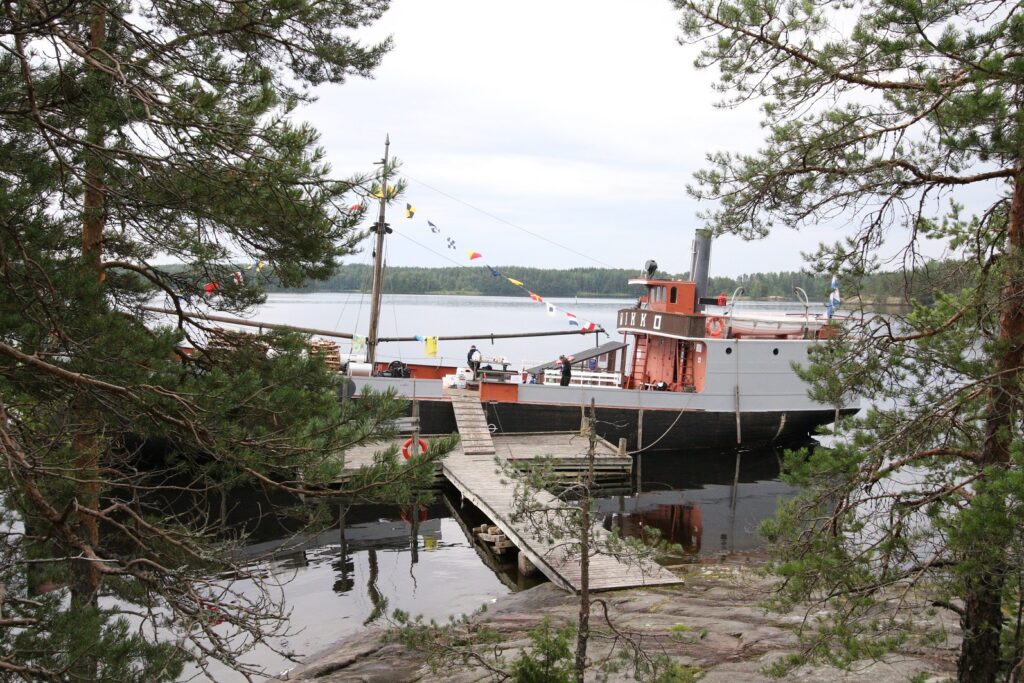
The tar steamer Mikko ferried timber across the Saimaa under the banner of Enso-Gutzeit Ltd between 1938–1963. Before that, the steamer was named Ensi and served various owners on various waterways, such as Lake Onega, the Svir, Lake Ladoga and the coastal waters of the Baltic. In 1970 the Mikko was donated to the city of Savonlinna, which has since renovated the steamer as a fully functional museum ship.
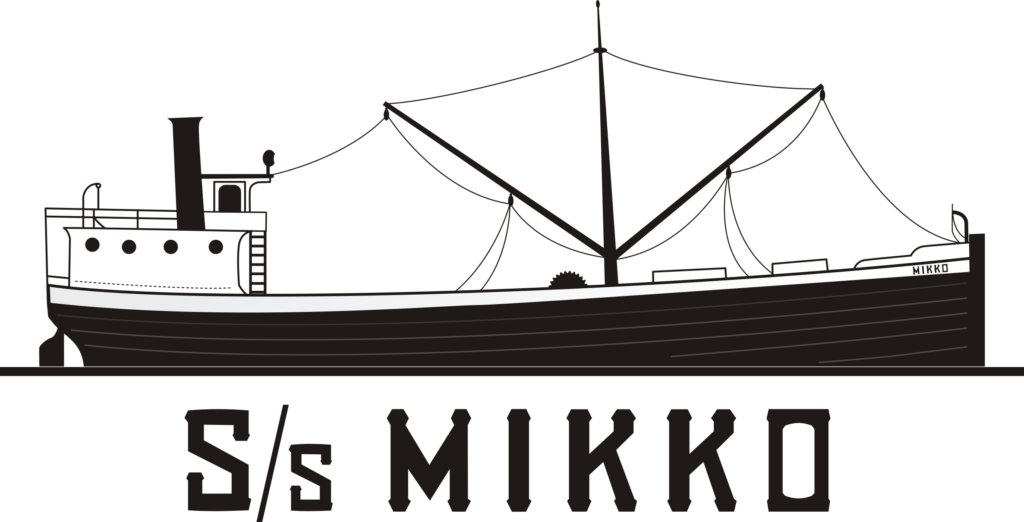
- Built at the Savonlinna machine works in 1914.
- Length 30.4 m.
- Width 7.1 m.
- Draft 2.4 m.
- Speed 6 knots.
- Still functional, with a wood-fired steam engine.
- Also used for public cruises.
THE STORY OF THE MIKKO
The Birth of the SS Ensi
The story of the Mikko begins at the turn of the 1900s in Koivisto, a town in what is now Russian Karelia. A local merchant, shipbuilder and statesman named Vilho Penttilä had died at an early age, leaving his estate with the task of maintaining his businesses and cultivating his fortune. As traffic along the Saimaa Canal connecting the lake network to the Baltic had been steadily growing for years, the estate decided to order an all-new cargo ship for their fleet.
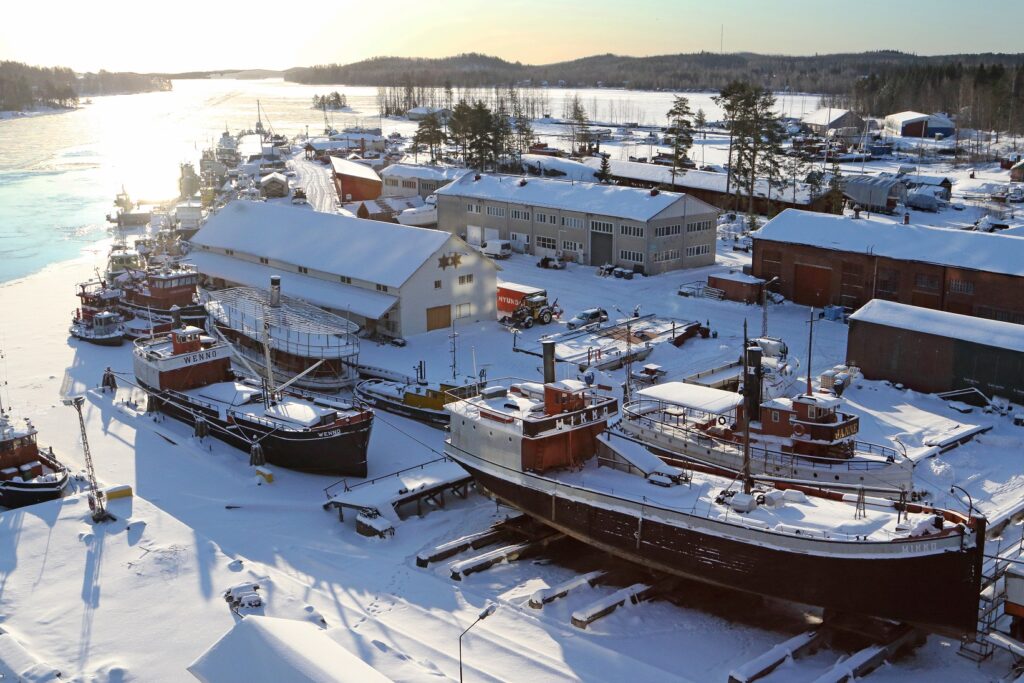
In late 1913, they sent their commission to the machine works at Savonlinna, then a small town of 4000 experiencing an economic downturn but with plenty of shipbuilding know-how. The price of the new tar steamer was negotiated at 46,000 Finnish marks, equal to 15 or 16 shiploads of firewood; a fair price indeed, as many ships could recoup that much in a single sailing season.
The newly built ship was officially handed over to the Penttilä estate on September 3 1914. After passing inspection, it was christened the SS Ensi, and its home port registered as Savonlinna.
Rough Going
The Ensi served various owners on various waterways, such as Lake Onega, the Svir, Lake Ladoga and the coastal waters of the Baltic. The Ensi’s travels came to a sudden stop, however, on its last trip to Joensuu in October 1937. Blinded by a dense fog, the steamer ran aground and sank up to its deck.
The Ensi’s owners didn’t bother fixing the ship, but sold it to the forestry products company Enso-Gutzeit Ltd., who had no problem carrying out repairs with their machine works and shipyard in Savonlinna. What they did have a problem with was the ship’s name: company tradition was to give ships five-letter names ending in an O. Thus, in the spring of 1938 the steamer was rechristened as the SS Mikko.
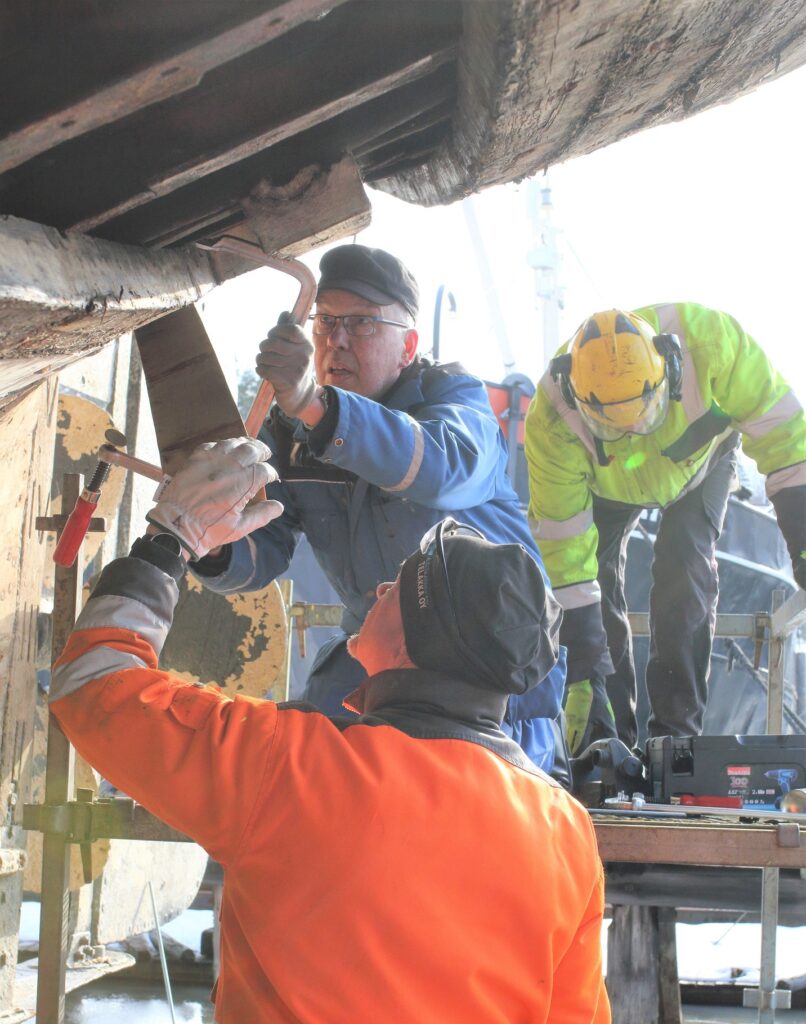
The tar steamer Mikko spent a good two decades hauling wood across the Saimaa to Enso-Gutzeit’s factories, whether for fuel or raw material. Eventually, alternative modes of transport and tightening budgets made the tar steamers obsolete. The fall of 1963 saw the SS Mikko’s final wood shipment.
The Mikko’s sturdiness and good repair had not only kept it in active use longer than its siblings, but also kept it from being dismantled in its obsolescence. Enso-Gutzeit maintained it as a spare, always ready to go at the Savonlinna shipyard in Laitaatsilta in case of sudden surges in demand.
One burst of excitement in this period of dormancy came in the summer of 1966, when the Mikko served as the setting of the TV show Huvipursi by the Finnish Broadcasting Company. Cameras followed the Mikko as it toured the scenic Saimaa, stopping at different towns every Saturday, towing a floating dance stage behind it. Finnish singers performed on the Mikko’s deck for audiences on site and at home, and there was even an appearance by pop star Millie Small, of “My Boy Lollipop” fame. All in all, it was a considerable feat for the broadcast technology of the day.
The End of an Era
After the summer of ’66, the Mikko was no longer needed even on standby. Even a ship sitting in drydock costs money, so Enso-Gutzeit Ltd put the Mikko and dozens of other company ships on sale in the spring of 1969. Ships that failed to sell would be liquidated in the breaking yard.

Many potential buyers showed an interest in the last true Finnish tar steamer (the SS Wenno and SS Romeo, also being sold, had iron hulls unlike the wooden Mikko), including the Finnish Heritage Agency and a student association from the University of Helsinki with a tradition of cruising the Saimaa in tar steamers.
It was this student association that requested Enso-Gutzeit take the SS Mikko off the market, the idea being that a foundation or some other organization focusing on the ship would buy it, maintain it and use it for the public good. The company acquiesced in the fall of 1969 and delisted the Mikko, while the student association brainstormed one potential funding scheme after the other. By the spring of 1970, Enso-Gutzeit had decided to call the whole thing off and instead donated the world’s last remaining traditional tar steamer directly to the city of Savonlinna, to be made into a museum ship. The Mikko’s 33-year career in the company’s service was over.
Degeneration and Regeneration
The survival of the SS Mikko was not yet a sure thing, however. After spending the first three summers of the 70s as a cruise ship, in 1973 the Mikko was noted to be in worse shape than estimated during the handover from Enso-Gutzeit. A new estimate placed a price tag of 260,000 Finnish marks on the SS Mikko’s seaworthiness.
The student association couldn’t pay that, and the new town manager of Savonlinna wasn’t inclined to. The municipal council of Savonlinna turned down every suggestion to further renovate the Mikko.
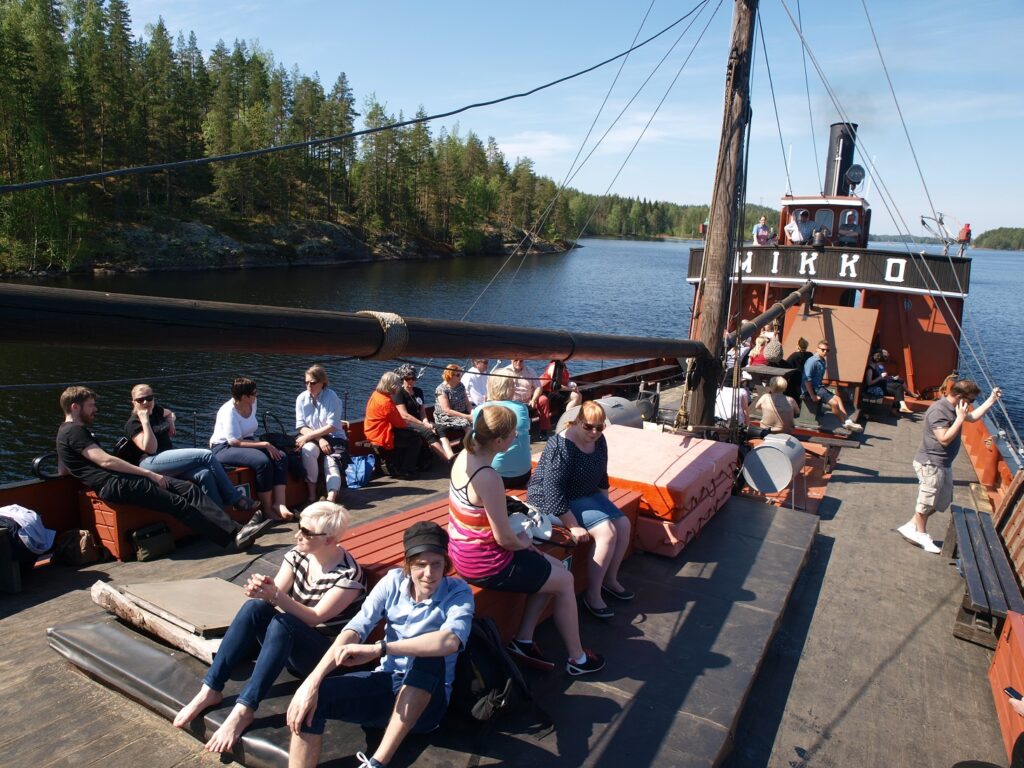
Thus, this valuable historical artefact, having been saved from the breaking yard with great effort, was instead left lying fallow in Savonlinna’s Haislahti harbour for years (1974 – 1979), unguarded and unmaintained, an easy target for vandals and squatters until it eventually started taking on water. Suffice it to say that historical preservation efforts were not in vogue for much of the 70s.
In February 1978, as Savonlinna was planning a new museum at the old granary in Riihisaari, the Finnish Heritage Agency was contacted regarding the potential museal value of the old tar steamer. The FHA recommended the municipal council to renovate this valuable piece of history. The council agreed, and had the Mikko put in drydock while they negotiated with the state regarding the price. In the end it was agreed that the Ministry of Employment would pay for half (in the form of wages), with Savonlinna paying the rest.
Repairs continued until 1981. By that point the town of Savonlinna and the state had spent more than 600,000 Finnish marks on getting the Mikko ship-shape.
The Mikko Makes Waves
The SS Mikko becoming a museum ship did not result in it being immediately opened to the public. At first, it was rented out for private cruises and used for publicity purposes. The Mikko went down to Helsinki to advertise the Saimaa as a tourism destination. The old steamer ferrying VIPs and serving as a stage for seminars and exhibitions gained a good deal of positive attention.
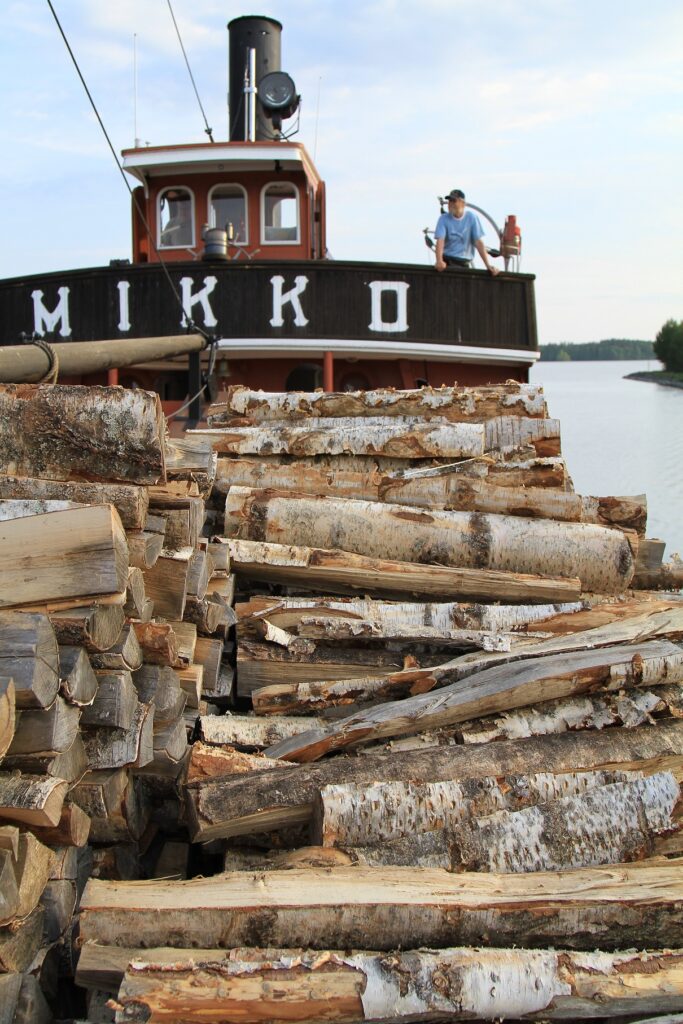
The Mikko became a familiar sight at all kinds of public events in the following years. In 1987 the recently-founded Provincial Museum of Savonlinna featured the Mikko as part of a popular exhibition, with more than 30,000 people coming aboard in total. The tar steamer Mikko had become a household name!
One integral part of the Mikko’s continued survival has been the Saimaa Navigation Museum Association. Originally founded to carry out repairs on the recovered steam schooner Salama, the association has since refocused more and more onto the upkeep of the SS Mikko. Indeed, the combined value of volunteer work and donations has long surpassed the official maintenance funding the SS Mikko receives from the government.
The Tar Steamer Mikko Today
The SS Mikko is surrounded by a night-constant buzz of activity. The centennial ship hosts thousands of visitors every year as a part of the steamer exhibition at Riihisaari, not to mention the public cruises and different events. The Saimaa Navigation Museum Association and even the student association at the University of Helsinki from all those years ago are both active participants in the Mikko’s operations.
The Mikko underwent another round of extensive repairs in the spring of 2020, bent planks swapped out for new ones, seams filled with pitch, wooden surfaces tarred over. Keeping the steamer floating, fit and functional takes constant repairs, maintenance, tarring and running.
The last surviving tar steamer, like all the other museum steamers at Riihisaari, shouldn’t be taken for granted. That it has survived to this day is a result not only of luck, but a tremendous amount of hard work and commitment from a grand cast of actors and agencies. It is our duty to keep the Mikko afloat for future generations as well.
The Story of the Mikko is based on a book by FT Sakari Auvinen, PhD:
S/s Mikko – Saimaan viimeinen puurunkoinen tervahöyry. Saimaan purjehdusmuseoyhdistys ja Savonlinnan maakuntamuseo, 2016, 136 pages, Finnish w/ brief English summary. Available at the Riihisaari museum shop.
LIFE ABOARD THE SAIMAA TAR STEAMERS
The crew of a tar steamer consisted of the skipper and the first mate (taking turns at the wheel), a couple of deckhands and the machinist and his mate. The ship’s galley was the domain of the quartermistress. While the skipper and machinist needed a vocational degree, the rest of the crew were hired from among local workers. The jobs were in high demand, offering decent pay and plenty of variety. Deckhands were usually rural laborers or petty farmers. They would spend the winter season working as lumberjacks, with the skippers working in upper management and machinists employed by any number of industries.
A tar steamer kept moving around the clock, only stopping for bad weather. The crew worked in two shifts of six hours at a time and spent their free time resting, eating, playing cards, singing and playing the accordion. Hard work was fuelled by solid victuals: potatoes and gravy, soups and porridges. Coffee was a popular drink, as was the occasional swig of spirits.
Tar steamers would often race one another and get into spats with the bargemen at the Saimaa Canal. Accidents were unavoidable: men fell overboard, ships ran aground, propellers unscrewed themselves, and, indeed, some ships sank completely.